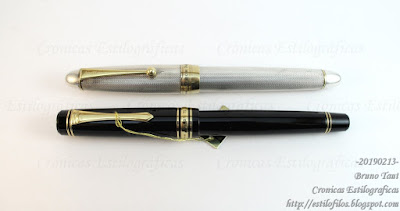But what is, in actual terms, a Naginata Togi nib? Is it worth the price Sailor is asking for them?
First and foremost, a Naginata Togi nib is a variable nib―a nib whose line width changes with the angle between pen and paper. Then, a Naginata Togi is a longer than usual nib, and this allows for some experiments to create new points―bending the nib, duplicating and triplicating the nibs, etc.
The question now is whether these features were so unique in the market as to justify Sailor in its bold move.
Variable nibs are not new at all―they have existed for more than a century. Nowadays, though, they are not that common, but they are not exclusive to Sailor. The paradox is that Sailor offers a much cheaper alternative―the zoom point available on various models including the very affordable Young Profit (JPY 5000, plus tax), also known as Somiko.
Then, what about the experiments nibmeister Nobuyoshi Nagahara performed on these nibs? Brilliant as they are, facts show that they do not need a Naginata Togi as a base. And nowadays there are a number of nibmeisters out there, in Japan and overseas, recreating those two- and three-fold nibs.

Three Sailor Cross nibs (2-fold nibs). Note how the nib on the lower right side is made over an old nail type nib.

Two cross nibs: the one on top was made by nibmeister Yamada over a Pelikan M800; the other is a Sailor nib made for the 90th anniversary of the company in 2001.
What is left, then?
What might be left are some of the cuts Sailor offers or used to offer on these specialty nibs―the King Cobra, the King Eagle... But mostly, what is left seem the name Naginata Togi as a brand in itself. And time will tell is Sailor's strategy to cash it is correct or not.
My thanks to Zeynep Firtina.
Iwase Seisakusho prototype – Hôgadô Doroai (Sailor)
Bruno Taut
Chiyoda, March 20th, 2019
etiquetas: Sailor, plumín, mercado, nibmeister Nagahara Nobuyoshi
Bruno Taut
Chiyoda, March 20th, 2019
etiquetas: Sailor, plumín, mercado, nibmeister Nagahara Nobuyoshi













































